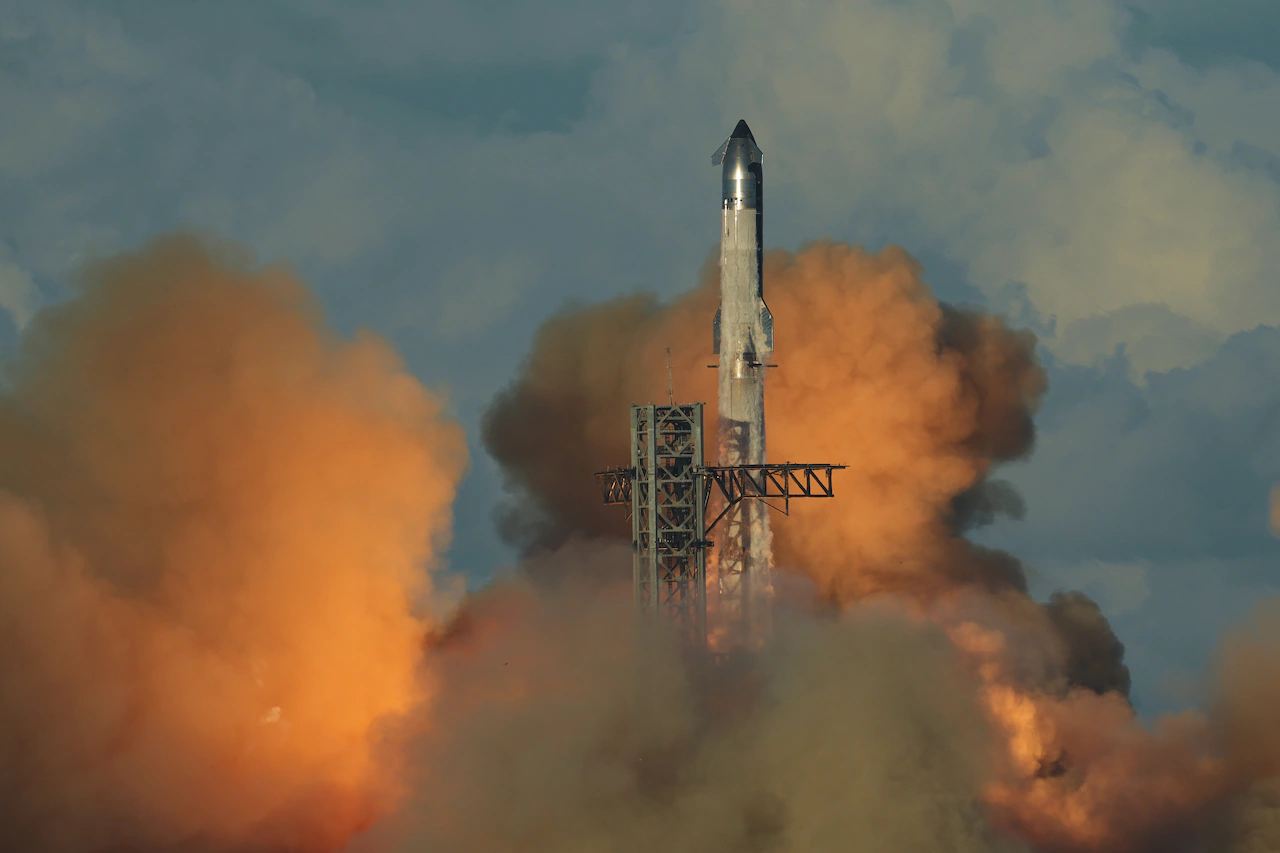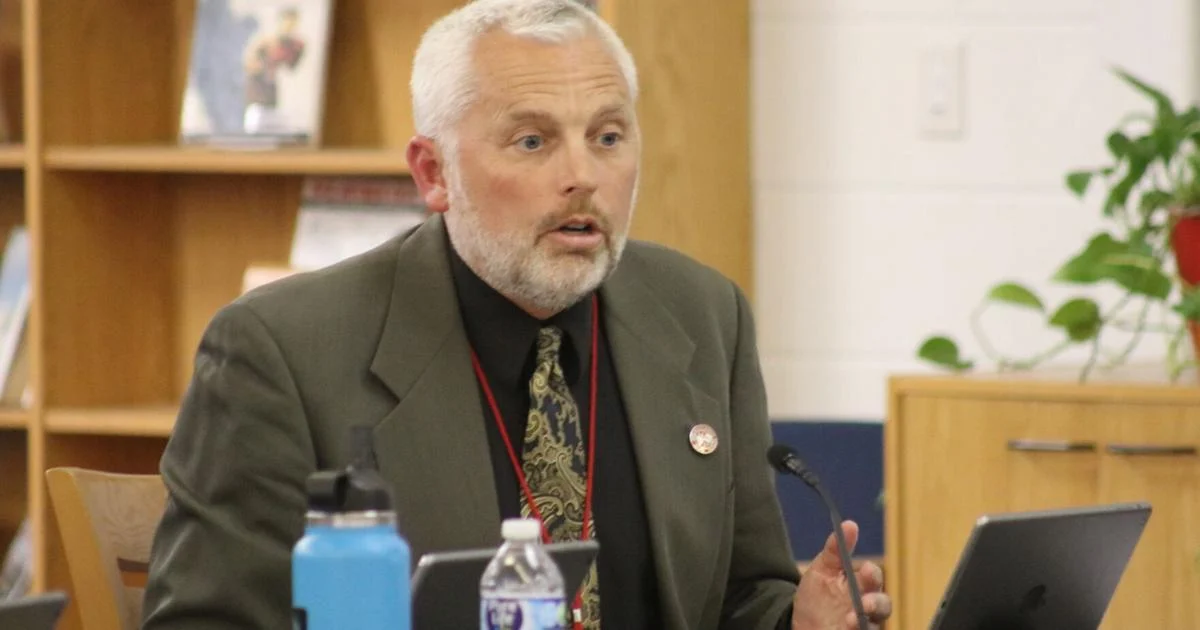Copyright AL.com

By Tim Fernholz, Bloomberg Once Elon Musk decided to build a reusable spacecraft to carry his dreams of Martian colonization, the engineers at SpaceX knew they would need a special engine for the world’s most powerful rocket. Starship, as the vehicle came to be called, demanded what’s known as a “full-flow, staged combustion” engine. Wringing every last ounce of power from rocket fuel demands a machine that can precisely control an explosion again and again - failing in that mission means picking pieces of it out of the ocean. The design is so complex that it had never been used: The Soviets built one and tested it on the ground in the 1960s, but never sent it into space. Musk hired Jeff Thornburg, a veteran aerospace engineer, to lead engine development. Earlier in his career, Thornburg had worked on a US government project called the Integrated Powerhead Demonstrator, where NASA and US Air Force engineers worked with contractors to build and demonstrate the hardware for a full-flow, staged combustion rocket engine. In 2012, when SpaceX began building its own version of that engine, Thornburg and his engineers drove to a government warehouse in the California desert and brought back a truck filled with leftover experimental equipment from the project. SpaceX still had plenty of work to do: Taking any technology demo and making it reliable enough for operations requires extensive testing and tuning. Raptor, as the company calls its engine, uses a different kind of fuel than the IPD project, which meant new designs and experiments. In 2019, SpaceX became the first organization in the world to fly this type of engine. When Starship and its Super Heavy booster took flight on Oct. 13, it was a testament to SpaceX’s expertise - but also to the American system of public-private innovation that is currently facing its biggest stress test in years. “Raptor wouldn’t look the way it does without the IPD program,” Thornburg says. “Not only did IPD pave the way for a lot of things that are happening with Raptor and other engines, the same process happened to make SpaceX successful with Falcon 9 and Merlin.” Indeed, the Merlin engines that power SpaceX’s Falcon 9 - the world-leading reusable launch vehicle that set the stage for so many of the company’s successes - also began as a NASA project, called Fastrac. And SpaceX’s groundbreaking ability to land its rocket vertically was inspired by a different NASA-USAF project, called Delta Clipper, that demonstrated a hovering vehicle in the 1990s. Building on those findings made it possible for SpaceX’s Falcon 9 booster to fly again and again, cutting costs and allowing the company to launch its lucrative Starlink satellite network. R&D Elbow Grease As SpaceX technicians readied Starship for its most recent launch, news of another wave of layoffs at NASA began to trickle out. The Trump administration - which has proposed dramatic cuts to the world’s leading space agency - now plans to eliminate more roles, even after nearly 4,000 employees, more than a fifth of its workforce, departed or were laid off this year. With few space experts in the White House, the administration’s vision for NASA prioritizes human missions to the Moon and Mars run by private contractors, while slashing funding for technology development, climate science and robotic exploration. SpaceX’s successes, and apparent edge over NASA in building rockets and spacecraft, have fueled debate over the role of government and the private sector in creating new technologies. The idea that private companies are better positioned for this work is part of Trump’s case for making cuts at NASA, the National Science Foundation and the National Institutes of Health. The slashed budgets are accelerating an existing trend: NASA programs to develop mobile in-space robots, transfer fuels in space and build nuclear rocket engines have all been set aside as private space companies push ahead. But while outsourcing public tech to private-sector engineers (and their capital) has proven an effective way to solve hard engineering problems, the focus on spectacular final products can obscure the chain of investments behind them.Governments don’t just provide funding and create demand for tech companies; they also supply research and development elbow grease. Akhil Rao, a former NASA economist who co-founded research and advisory firm Rational Futures, points out that government nondefense R&D at agencies like NASA, NIH and the Department of Energy is estimated to account for about a fifth of post-World War II business-sector productivity growth in the US. Policies that overlook those contributions may leave the founders of the next American tech startup without seed corn to plant. Fred Block, a sociology professor at the University of California at Davis, argues that despite complaints about the dominance of neoliberalism, the US still has a “hidden” developmental state that leverages government power to lay the groundwork for commercial success. The same forces that drove the Department of Defense to lay the foundations for the internet now apply to tech such as mRNA vaccines and electric cars. “Tesla’s success did not spring from Elon Musk’s genius,” Block tells me. “It sprung from the fact that there had been 20 to 30 years of federal investment in developing electric vehicles.” SpaceX is a case study in that relationship. The company has depended on NASA and the Pentagon not only to fund the development of its technology and buy the finished products but also to supply know-how through programs like IPD, Fastrac and Delta Clipper. The rub, of course, is that those programs were all canceled - victims of shifting priorities, cost-cutting and experimental accidents - like many promising (and not-so-promising) public tech programs. In a blue-ribbon report last year, former Lockheed Martin Corp. Chief Executive Officer Norm Augustine warned that NASA was not investing enough in fundamental technology and that its engineers could lose the know-how required to understand the hardware they’re buying from the private sector. Thornburg and hundreds of government engineers like him went to work for companies such as SpaceX because it was their best chance to actually build something that goes to space. Now, American space plans may be swinging too far in that direction. “I’m a little concerned because the government’s kind of lost its way,” says Thornburg, now the CEO of startup Portal Space Systems, which is developing highly maneuverable spacecraft. “NASA and the Air Force try to get funding for things like this and meet a response on Capitol Hill, ‘If SpaceX is going to do this, why do we need to fund you guys?’ There’s an education that needs to happen, an impetus on government-focused R&D.” Fundamental Science Advances With Starship, SpaceX is trying to level up once more, making not just a rocket booster but a spacecraft that can return from space and easily fly again. To do that, it must be able withstand temperatures of 2,600°F (1,427°C) when plunging back into the Earth’s atmosphere. That’s no small challenge: The ceramic tiles used to insulate the vehicle’s metal frame from a blanket of superheated plasma are brittle and difficult to keep in place. NASA’s Space Shuttle faced the same problem and solved it with a time-consuming refurbishing process that included more than a million procedures. The agency’s engineers ultimately grounded the vehicle in large part due to uncertainty around the delicate thermal protection systems, which failed during the Columbia tragedy in 2003, resulting in the death of seven astronauts. Like the Space Shuttle, Starship is intended to be reusable - but SpaceX wants to turn it around for reuse even faster. NASA is paying the company nearly $3 billion to develop Starship as a lunar lander, for example, which would require more than a dozen in-orbit refuelings (a technique SpaceX has yet to demonstrate). The costs of that effort pencil out if Starships can be refurbished for their next flight quickly - SpaceX engineers say their goal is “hours, not days.” But if it takes weeks or longer, getting to the Moon could be more expensive than SpaceX and NASA expect. Now, NASA is worried that Starship is years behind a planned 2027 Moon landing, which may mean China gets humans there before Americans return. Acting NASA administrator Sean Duffy recently said he would open up the lander contract to other competitors, including Jeff Bezos’ Blue Origin. That news left Musk complaining about “Sean Dummy” on his social media site X. Chris Combs, an associate professor at the University of Texas at San Antonio who studies high-speed aerodynamics, says it’s unclear whether SpaceX has figured out the reentry problem well enough to reuse its spacecraft as quickly as the company expects - a research area “we chronically underfund.” “SpaceX isn’t in the business of doing fundamental science advances,” Combs says. “We’re getting to a point where they need to wonder if there’s some material science to come out that isn’t sitting there ready right now. And do you guys want to pivot and actually do the basic research? Or do you need to wait 20 years for somebody to come up with that answer?” SpaceX is confident it can solve the heat shield problem itself. “This is an area where, you know, we’re inventing things,” senior SpaceX engineer and former NASA executive Bill Gerstenmaier said during remarks at the Glenn Space Technology Symposium in September, describing a new “crunchwrap” technique for installing the tiles. The latest flight test suggests the company is making progress: The vehicle didn’t suffer as much obvious damage as in previous flights. But Gerstenmaier also said SpaceX is building a factory to produce 30,000 heat shield tiles each day, enough for an entire ship. An impressive manufacturing feat, it suggests the company might need to rebuild the Starship’s entire heat shield after each landing - hardly the stuff of rapid reusability. Sharing Technology The impact of US cuts on public tech development will depend on how much the private sector can fill the void. The idea that artificial intelligence models are a quick fix for this problem is overstated - a research paper widely cited to support that idea was retracted by the Massachusetts Institute of Technology - but the assumption itself misunderstands the void’s nature. What’s at risk isn’t just innovation but an appetite for open exchange. John Scott, an emeritus professor at Dartmouth College who studies innovation policy, says the challenge will be replicating existing structures that bring public and private researchers together. The government can disseminate the results of its work to many organizations - something research suggests the private sector won’t do. Small Business Innovation Research grants, for example, produce more patents than companies backed by private capital. “This kind of openly available technical information can be especially valuable for innovation and economic growth in domains with risky technologies that have high potential spillover benefits beyond their intended use,” says Rao at Rational Futures. Musk has said he wants to share SpaceX’s intellectual property broadly, but if the company does solve the reentry heat problem, will it pass along its findings to competitors and customers for free? Combs, at least, is hoping that NASA or SpaceX will release more data from the flights to validate computer design models. That kind of sharing is valuable because developing a new piece of technology can require multiple attempts or the right business model before it really takes off. Companies like Aerojet and Rocketdyne, which participated in the original IPD program, didn’t make anything of that tech before SpaceX got their hands on it. Companies like Rotary Rocket and Orbital Sciences failed to commercialize Fastrac before it became the foundation of the Merlin engine. There’s recognition at SpaceX that information sharing is important. In his speech, Gerstenmaier called on researchers to move more quickly and work on common problems faced by space companies. But his description of the government’s role in technology development was telling. “[At SpaceX,] I get what I call a minimum viable solution - I don’t really understand why it works, but somehow it works,” he said. “We’re going to use it, we’re going to monetize it, we’re going to make it work. You have the chance to help me understand why it works.” Historically, it’s not clear this is how innovation flows. The US is entering a real-life experiment with this model as NASA cuts funding for everything from small-business research grants to next-generation aircraft research. What that means for the next team of engineers who want to spin a government tech project into a venture-capital-backed unicorn will depend on many factors - including whether Congress rejects President Donald Trump’s science austerity budget. Space explorers will pressure-test this shift in approach. Scientists believe, for instance, that the real path to Mars will require nuclear power for spacecraft and surface exploration. Bhavya Lal, a former head of NASA’s science programs who advocates for the idea, argued in a recent report that it will require a Manhattan Project-level effort that unites expertise at the DOE and NASA with private-sector reactor manufacturers. NASA is taking a different approach: ordering a private effort to deliver reactors to the Moon with scant support from the government. Lal warns that without the correct structure and resources, the agency risks asking too much of the private sector. The US could once again spend hundreds of millions of dollars - public and private - and end up no further along than the last generation of overreaching programs that never flew. The challenge, Lal says, is still mating government science with entrepreneurial zeal. “There is a high need for tech maturation in parallel with funding a flight program,” she said of nuclear technology in space. “But an open-ended tech maturation effort without either a deadline or a parallel flight program is just a jobs program.”



